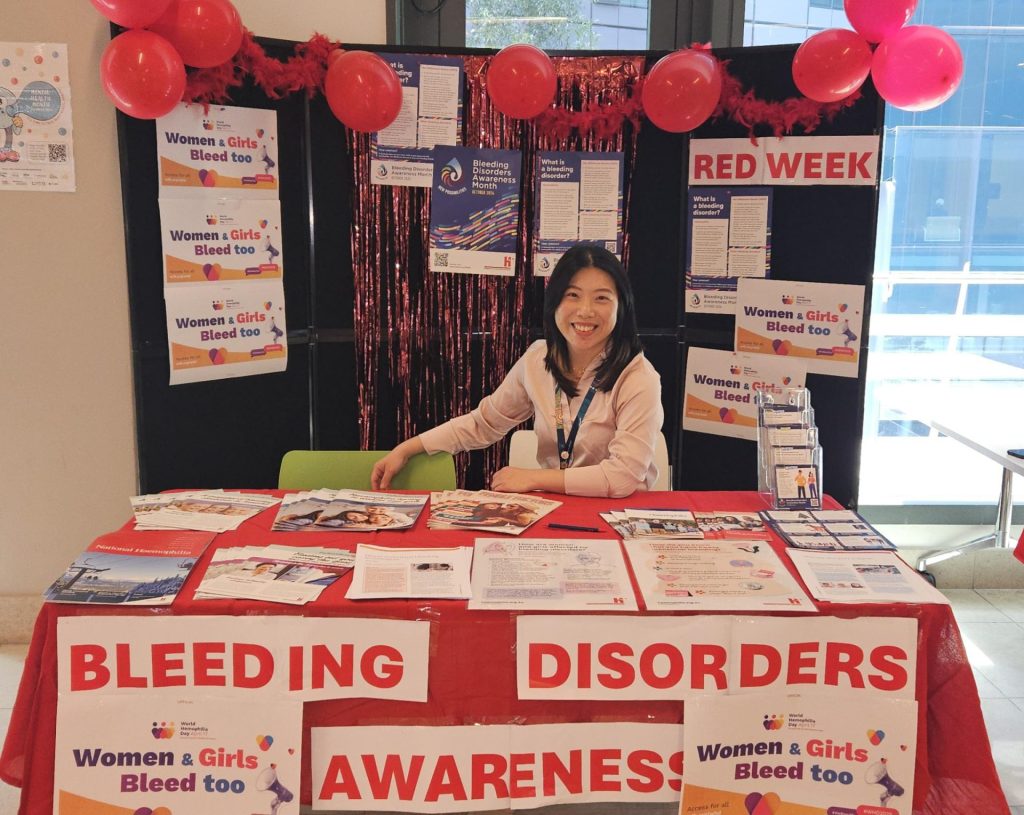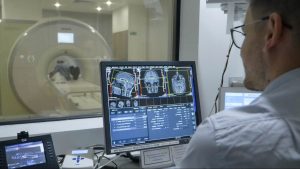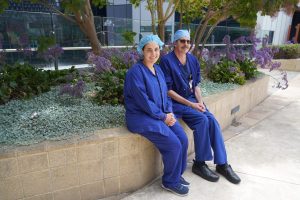It’s sometimes called a ‘royal disease’ – but the bleeding disorder haemophilia occurs across all levels of society.
Around 3000 Australian adults have haemophilia, 289 of whom live in South Australia.
Yu-hsuan (known as Yoshi) is Haemophilia Nurse Consultant at the Royal Adelaide Hospital (RAH) and for the Haemophilia Treatment Network SA, which operates across the state and into Mildura and Broken Hill.
“Haemophilia is a genetic disorder that affects blood clotting, causing prolonged bleeding and a range of associated health issues,” says Yoshi.
“In my role at the RAH, I manage patients with haemophilia as well as those with other bleeding disorders, such as von Willebrand disease and platelet disorders.”
“We work hard to help people maintain good physical and psychological health over time, and to prevent any kind of health crisis.”

From one generation to the next
Haemophilia results from defects in proteins involved in clotting of blood, caused by mutation in a relevant gene. Mutated genes can be passed down from generation to generation, via the X chromosome.
Queen Victoria famously had a haemophilia gene mutation that she passed on to three of her offspring. The Queen’s son Leopold, and several grandsons and great-grandsons were affected by haemophilia.

Queen Victoria with her husband Albert and nine children. Image thanks to Wikimedia commons.
Symptoms of haemophilia are linked to poor blood clotting and include nosebleeds that take a long time to stop, bleeding gums, and internal bleeding leading to bruised skin, and pain and stiffness around joints. Long-term damage to joints can occur if not treated appropriately.
Management of haemophilia
Through the Haemophilia Treatment Centre at the RAH, adults with haemophilia and other bleeding disorders are offered comprehensive care to ensure they can lead healthy lives with fewer complications.
One of the key aspects of the service is prophylaxis, or preventive treatment, to reduce the risk of spontaneous bleeds.
“Prophylactic treatment involves regular injections of clotting factors,” Yoshi explains.
“Some patients have injections twice a week, while others need them less frequently.”
Most of these treatments are intravenous, although some newer options, like subcutaneous injections, offer a more convenient alternative.
The service also focuses on preventing bleeding episodes and managing them effectively when they do occur. This includes providing patients with personalised plans for surgeries or other procedures.
“If a patient needs dental work, surgery or even cosmetic injections, they contact us so we can create a plan to prevent excessive bleeding during and after the procedure,” Yoshi says.
Psychological and emotional care are also vitally important for patients with bleeding disorders.
“Many patients, particularly those diagnosed as children, struggle with the emotional burden of their condition,” says Yoshi.
Representing Australia on the global stage
Yoshi recently attended the 2024 World Federation of Haemophilia, where she shared with conference attendees the importance of her work as Haemophilia Nurse Consultant at the RAH.
“In speaking with others working in my field, one of the things that struck me at the conference was how fortunate Australian patients are,” Yoshi says.
“In many countries, access to haemophilia treatments is limited.”

Yoshi provided an article Exploring haemophilia prophylaxis for the Haemophilia Foundation of Australia, who had supported her attendance.
More information and support for clotting disorders
October is Bleeding Disorders Awareness Month, which aims to raise awareness about haemophilia, von Willebrand disease and related inherited bleeding disorders around Australia.
To learn more about referrals through Central Adelaide Local Health Network, visit the Haematology page of the RAH website.
For more information about haemophilia, visit the Haemophilia Foundation of Australia.



